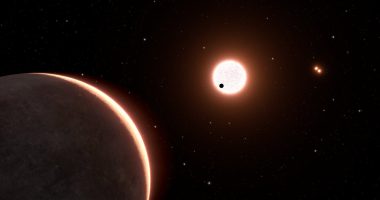A FULL Moon lights up the night sky – and there’s a great one coming up.
We’ve put together a quick guide on everything you need to know about full Moons and when they are – including when the next Hunter’s Moon is.
What is a full Moon?
The Moon is little more than a rock orbiting Earth.
Importantly, it doesn’t produce any visible light of its own.
So when we see the Moon, it’s only thanks to light from other objects (like the Earth or Sun) hitting it, and then bouncing off down to our eyes.
The Moon, the Earth and the Sun are constantly changing positions, which means we see different parts of the Moon at any given time.
When the Moon is between the Earth and the Sun, its rear side is lit up – leaving it in darkness for humanity.
Most read in The Sun
That’s called a new Moon.
And when the Moon is on the opposite side of the Earth to the Sun, it’s fully lit – giving us a full Moon.
There are various phases in between these two, with a total cycle of about 29.5 days.
The last full Moon was on November 19.
When is the next full Moon and what time?
The next full Moon is on December 18/19, 2021.
It is known as the Cold Moon, and will appear fullest at 11.35pm New York time on December 18.
In the UK, you’ll be able to see it best on the morning of December 19.
Full Moon dates 2021 – here’s the full list
There are 12 full Moons to spot in 2021, each with its own unique name.
Here’s the full list:
- January 28 – Wolf Moon
- February 27 – Snow Moon
- March 28 – Worm Moon
- April 27 – Pink Moon
- May 26 – Flower Moon
- June 24 – Strawberry Moon
- July 24 – Buck Moon
- August 22 – Sturgeon Moon
- September 21 – Corn Moon / Harvest Moon
- October 20 – Hunter’s Moon
- November 19 – Beaver Moon
- December 19 – Cold Moon
Of these, there are two Supermoons, where the full Moon appears bigger and brighter than usual.
The two official Supermoons were on April 27 and May 26.
However, the full Moons in March and June were also classed as Supermoons by some – due to their immense apparent size in the sky.
We pay for your stories! Do you have a story for The Sun Online Tech & Science team? Email us at [email protected]
This post first appeared on Thesun.co.uk











